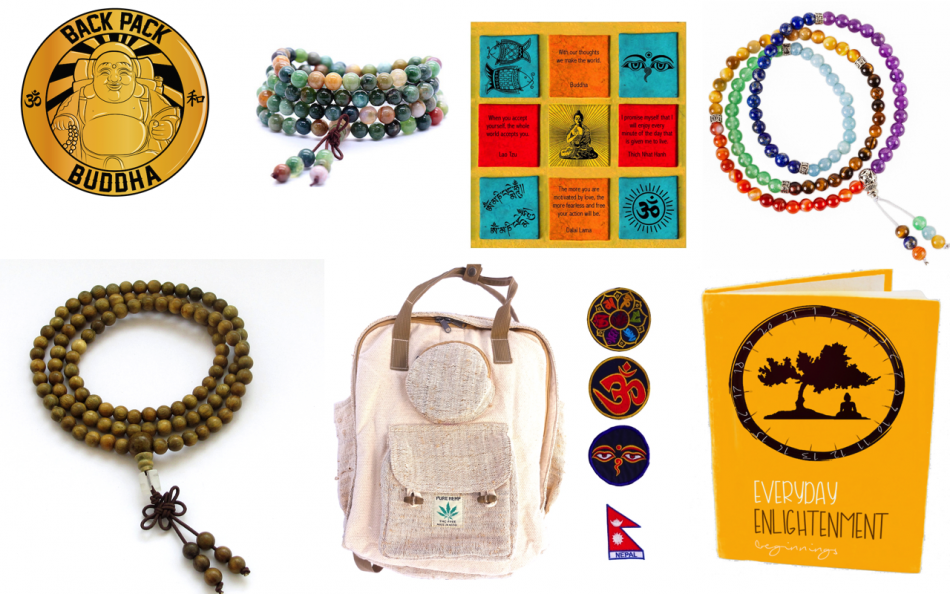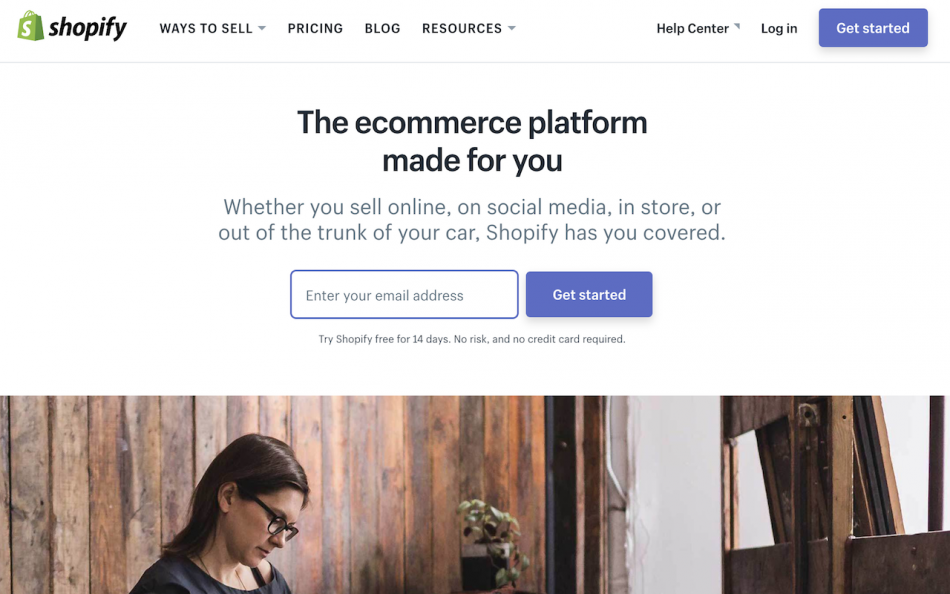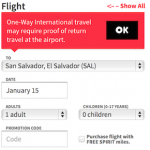 Life is something remarkable. One day you’re a homeless vagabond sitting up against a building getting pooped on simultaneously by two birds. The next day you’re on the 119th floor of the Ritz Carlton Hong Kong eating petit fours.
Life is something remarkable. One day you’re a homeless vagabond sitting up against a building getting pooped on simultaneously by two birds. The next day you’re on the 119th floor of the Ritz Carlton Hong Kong eating petit fours.
It’s been almost 20 months since I made my first sale on Shopify. There’s not a day that goes by without feeling immense gratitude for the incredible fortune given to me.
Of course, it wasn’t just given to me. I worked my ass off, researched products & marketing strategies for hours, and put all of my energy into its success.
Today, my Shopify store has generated over 1 million in sales. Although at first I was extremely skeptical of Shopify and e-commerce in general, I always kept moving forward despite my fears of failure.
The Fear Of Failure
I know what you’re thinking. It’s the same thing I was thinking when my friend Tom introduced me to Shopify. E-commerce is the domain of big retailers. It’s dominated by eBay, Amazon & Etsy. How could I ever compete? I’m not technical enough to run an online store. He probably just got lucky.
Fears of failure helped fuel my skepticism, and excuses kept piling up. That is until one day, after paying over 300$ in overdraft fees, I decided I had nothing more to loose. I was going to give it a shot. I figured I couldn’t get more broke than I already was, so what the hell.

Winning Product(s)
My friend Tom found incredible success selling animal rings. As tempting as it was to create a shop focusing on animal jewelry, I wasn’t about to start competing with the friend who introduced me to Shopify in the first place.
So I spent weeks trying to find a winning product and a compelling niche. Based on Tom’s advice I knew that what ever it was, it needed to be small, unique, and something that fell into a niche that had yet to be fully catered to.
After browsing through thousands of products on google and Alibaba, I came across a Green Sandalwood Mala (Buddhist prayer beads). It was relatively small, not something you could find in a Walmart, and based on my research, few others were selling it online.
As I stared at this Mala, my mind wandered toward memories of my Japanese great uncle Bon Chan who had passed away just two weeks earlier. He was a Buddhist community leader, and I joined him for mantra chanting on many occasions.
As I thought and stared, I just felt it. I was going to create a shop that not only sold Buddhist prayer beads, but also help spread the Buddhist ideals that my uncle Bon Chan imparted on me. Miss you uncle Bon Chan and Obaachan!
Shopify Store Creation
Now that I had a product I felt confident about, I needed to create an online store, and more importantly, a brand around it.
So what is Shopify exactly and why did I choose it?
Shopify is simply a platform like WordPress. While WordPress is for blogging and optimized for creating content, Shopify is for e-commerce and optimized for driving sales.
I ultimately decided to use Shopify not only because Tom swore by it, but after testing two other options, Square Space and Woocommerce, I found Shopify to be the most user friendly and have the most options for customization.
So I signed up for Shopify’s free 14 day trail, and created a Shopify hosted domain called Backpack Buddha.
Backpack Buddha, as I imagined it at the time, would be a medium where people could find authentic Mala beads, meditation tools and resources from countries with strong Buddhist traditions.
It wouldn’t be a major company like Lululemon or Gaiam, it would be a small operation focusing on karma based customer service, fair trade, and supporting livelihoods.
With these ideals in mind, I created an about page. I decided on a simple theme, and uploaded my first 3 Malas, Malas that I had found on Alibaba. The whole process of setting up the basic online shop was painless and took less than 3 hours.
But if you do need some assistance I highly recommend my friend Edward. He’s really knowledgeable, offers fair prices, and can customize your Shopify site any way you want it!
My First Sale
The following day I created a Facebook page. I watched 5 hours worth of Facebook advertising videos and spoke with Tom at length about strategy.
The first thing I found out I needed to do was upload a Facebook pixel from my Facebook page to my Shopify store, which was, after a short google search, as easy as copying and pasting. The pixel would track who visited my store and thereby optimize who would see the ad in the future.
The second thing I had to do was create an ad with three audience interests. I chose the Dalai Lama, Tibetan Buddhism, and Buddhist prayer beads. In other words, my ad would be shown to everyone on Facebook that had expressed interest in any one of these three interests.
With 35$ in my account, I decided to create an ad for 5 days spending 5$/day.
Within the 5 minutes of creating my ad, I the heard the very first “Cha-ching!” It was my first sale of 19$. Two minutes later, another “Cha-ching.”
Needless to say, I was so excited I had to run to the bathroom. “I did it! It works, it really works!” I yelled to nobody from the pot.
Product Sourcing & Shipping
In the beginning, I did what is known as drop shipping from China. I ordered the product directly from the wholesaler, manually entered customer information, and had it shipped directly to the customer. Although this is a great way to test out new products, as you do not have to take a chance by buying in bulk, it is not ideal for growth.
When I started getting over 50 orders a day, I decided I needed to buy in bulk and use a fulfillment center in the US. Not only would the price per product be cheaper, but customers would receive their order in 2-3 days as opposed to 7-10 days.
Backpack Buddha Today
I soon realized that sourcing products solely from China through Alibaba was not sustainable. Other shops kept springing up selling my Mala beads. So I decided to visit one of my favorite countries, Nepal, and create Mala beads and meditation tools that no one else could copy. I decided to create a unique brand.
Today, Backpack Buddha has over 40 unique products, the majority of which are created by hand by my team in Nepal. The business supports the livelihoods of countless Nepalese, has donated over 4000$ to various charities, and largely uses eco-friendly material such as Himalayan hemp for our backpack collection.
Conclusion
I had always thought that my path to success would be through this blog, The Runaway Guide. I was so obsessed with this blog, that I limited myself from trying out anything new.
When Tom introduced me to Shopify, I never even considered I could sell things online, let alone create a proper business and popular brand. So I was skeptical and scared at first.
But I took a chance, and I’m so grateful I did. Backpack Buddha provided me with the location independence and financial security I so desperately sought. More, it taught me about branding, marketing, product development, and networking. Most importantly, it has afforded me even greater confidence to endeavor into the unknown.
If a 16 year old runaway can do it, so can you :)
If you’re interested in starting a Shopify shop or want to move your existing retail shop online, let me know and I’ll do my best to help. Email me at TheRunawayGuide at yahoo.com.












Leave a Reply